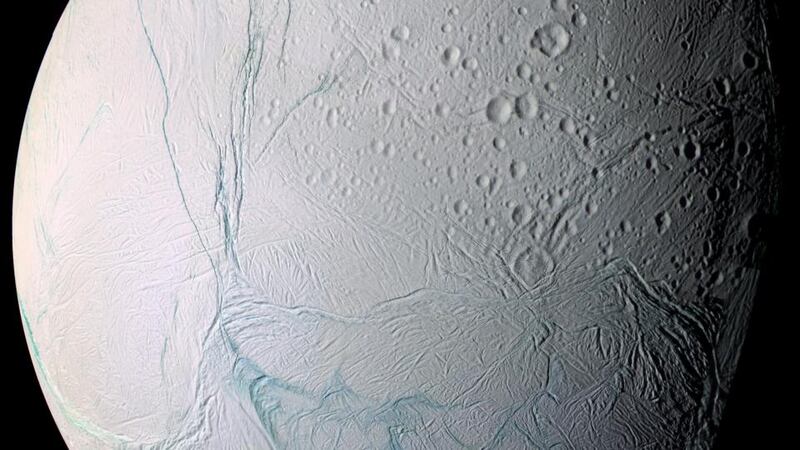An ice encrusted moon of Saturn harbours a secret - a hidden ocean of liquid water. The Cassini satellite orbiting the giant ringed planet confirmed the huge body of water by studying the moon's gravitational pull.
The moon Enceladus has proved something of a puzzle and a news maker since Cassini dropped into Saturnian orbit 10 years ago. Effectively Enceladus is a big ice-covered 500 km rock that attracted attention early as scientists wondered whether it might have liquid water underneath. Early pictures showed what have been described as the "tiger stripes" zig-zagging across the moon's southern hemisphere. They looked very much like joints between giant ice floes.
Then in 2005 the probe detected jets of water vapour and ice emanating from the stripes, convincing scientists that there must be liquid water underneath. The question was how to prove it.


Years passed but observations continued and it was as a result of three Cassini fly-bys in April 2010 and May 2012 that the answer came. Scientists from Italy and the US were able to measure the tiny gravitation tug Enceladus exerted on the satellite and used this to predict what lies beneath the moon’s frozen surface.
The outer shell is ice 30 to 50km thick, but there is a small ocean of liquid water under part of the southern hemisphere, which must be the source of the water vapour jets, the scientists say in the current issue of the journal Science .
This was the first time that a geophysical method was used to understand the internal structure of Enceladus, says Prof David Stevenson, the Marvin L Goldberger Professor of Planetary Science at Caltech. “This is really the only way to learn about internal structure from remote sensing.”
It is assumed that the water stays wet rather than freezing solid because of the massive gravitational pull on the moon exerted by Saturn. The resultant orbital flexing generates heat that keeps the ice melted and probably drives the surface venting.
The Cassini Huygens mission is a joint enterprise involving the US, European and Italian space agencies. It includes the Cassini orbiter and also the Huygens lander that dropped onto the surface of another moon Titan back in 2005.










